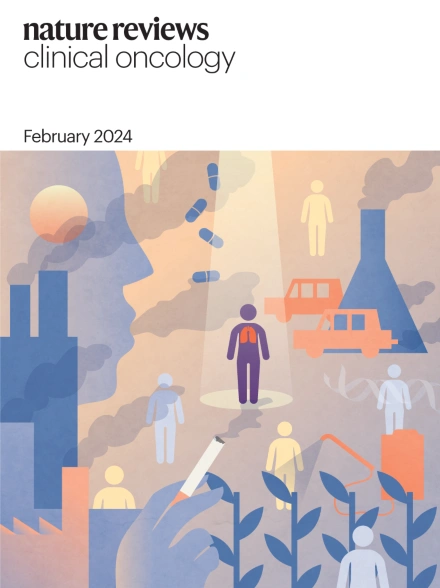Next-generation T cell immunotherapies engineered with CRISPR base and prime editing: challenges and opportunities.
IF 82.2
1区 医学
Q1 ONCOLOGY
引用次数: 0
Abstract
T cells can be reprogrammed with transgenic antigen recognition receptors, including chimeric antigen receptors and T cell receptors, to selectively recognize and kill cancer cells. Such adoptive T cell therapies are effective in patients with certain haematological cancers but challenges persist, including primary and secondary resistance, a lack of efficacy in patients with solid tumours, a narrow range of targetable antigens, and time-consuming and complex manufacturing processes. CRISPR-based genome editing is a potent strategy to enhance cellular immunotherapies. Conventional CRISPR-Cas9 systems are useful for gene editing, transgene knock-in or gene knockout but can result in undesired editing outcomes, including translocations and chromosomal truncations. Base editing and prime editing technologies constitute a new generation of CRISPR platforms and enable highly precise and programmable installation of defined nucleotide variants in primary T cells. Owing to their high precision and versatility, base editing and prime editing systems, hereafter collectively referred to as CRISPR 2.0, are advancing to become the new standard for precision-engineering of cellular immunotherapies. CRISPR 2.0 can be used to augment immune cell function, broaden the spectrum of targetable antigens and facilitate streamlined production of T cell therapies. Notably, CRISPR 2.0 is reaching clinical maturity, with multiple clinical trials of CRISPR 2.0-modified cellular therapies currently ongoing. In this Review, we discuss emerging CRISPR 2.0 technologies and their progress towards clinical translation, highlighting challenges and opportunities, and describe strategies for the use of CRISPR 2.0 to advance cellular immunotherapy for haematological malignancies and solid tumours in the future.利用CRISPR碱基和引物编辑技术设计的下一代T细胞免疫疗法:挑战和机遇。
T细胞可以用转基因抗原识别受体(包括嵌合抗原受体和T细胞受体)重新编程,以选择性地识别和杀死癌细胞。这种过继性T细胞疗法对某些血液学癌症患者有效,但挑战仍然存在,包括原发性和继发性耐药性,对实体瘤患者缺乏疗效,可靶向抗原范围狭窄,以及耗时和复杂的制造过程。基于crispr的基因组编辑是增强细胞免疫治疗的有效策略。传统的CRISPR-Cas9系统可用于基因编辑、转基因敲入或基因敲除,但可能导致不希望的编辑结果,包括易位和染色体截短。碱基编辑和引体编辑技术构成了新一代CRISPR平台,能够在原代T细胞中高度精确和可编程地安装已定义的核苷酸变体。由于其高精度和多功能性,碱基编辑和引体编辑系统(以下统称为CRISPR 2.0)正在成为细胞免疫治疗精准工程的新标准。CRISPR 2.0可用于增强免疫细胞功能,扩大可靶向抗原的范围,并促进T细胞疗法的简化生产。值得注意的是,CRISPR 2.0正在走向临床成熟,目前正在进行多项CRISPR 2.0修饰细胞疗法的临床试验。在这篇综述中,我们讨论了新兴的CRISPR 2.0技术及其在临床转化方面的进展,强调了挑战和机遇,并描述了未来使用CRISPR 2.0推进血液系统恶性肿瘤和实体肿瘤细胞免疫治疗的策略。
本文章由计算机程序翻译,如有差异,请以英文原文为准。
求助全文
约1分钟内获得全文
求助全文
来源期刊
CiteScore
99.40
自引率
0.40%
发文量
114
审稿时长
6-12 weeks
期刊介绍:
Nature Reviews publishes clinical content authored by internationally renowned clinical academics and researchers, catering to readers in the medical sciences at postgraduate levels and beyond. Although targeted at practicing doctors, researchers, and academics within specific specialties, the aim is to ensure accessibility for readers across various medical disciplines. The journal features in-depth Reviews offering authoritative and current information, contextualizing topics within the history and development of a field. Perspectives, News & Views articles, and the Research Highlights section provide topical discussions, opinions, and filtered primary research from diverse medical journals.

 求助内容:
求助内容: 应助结果提醒方式:
应助结果提醒方式:


